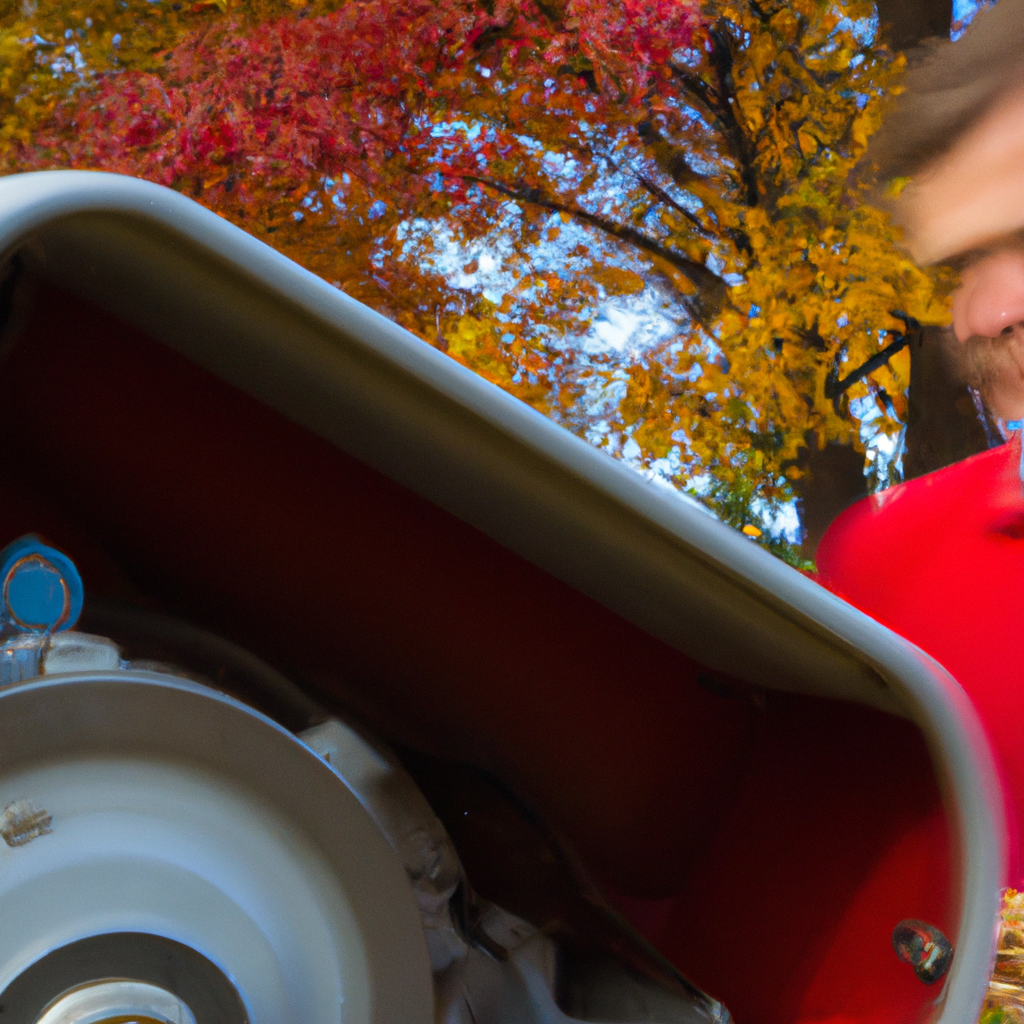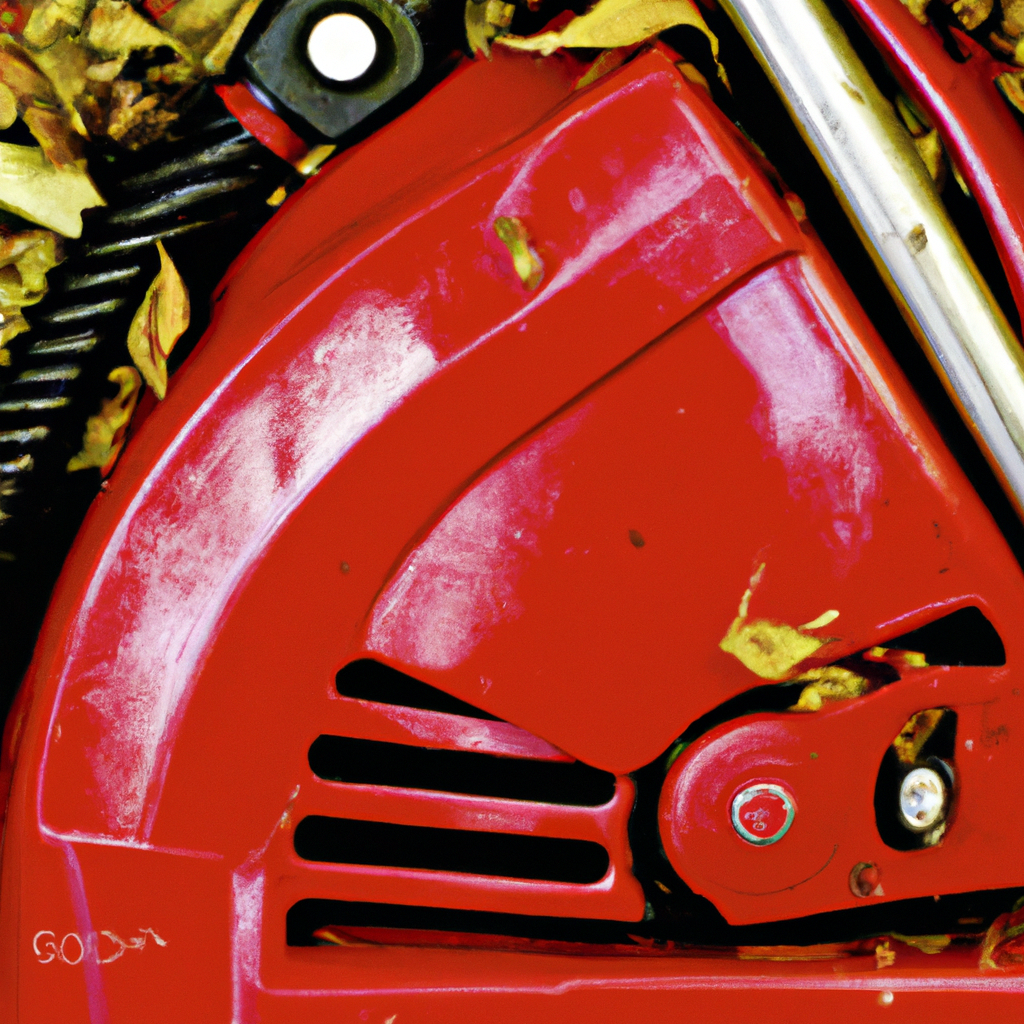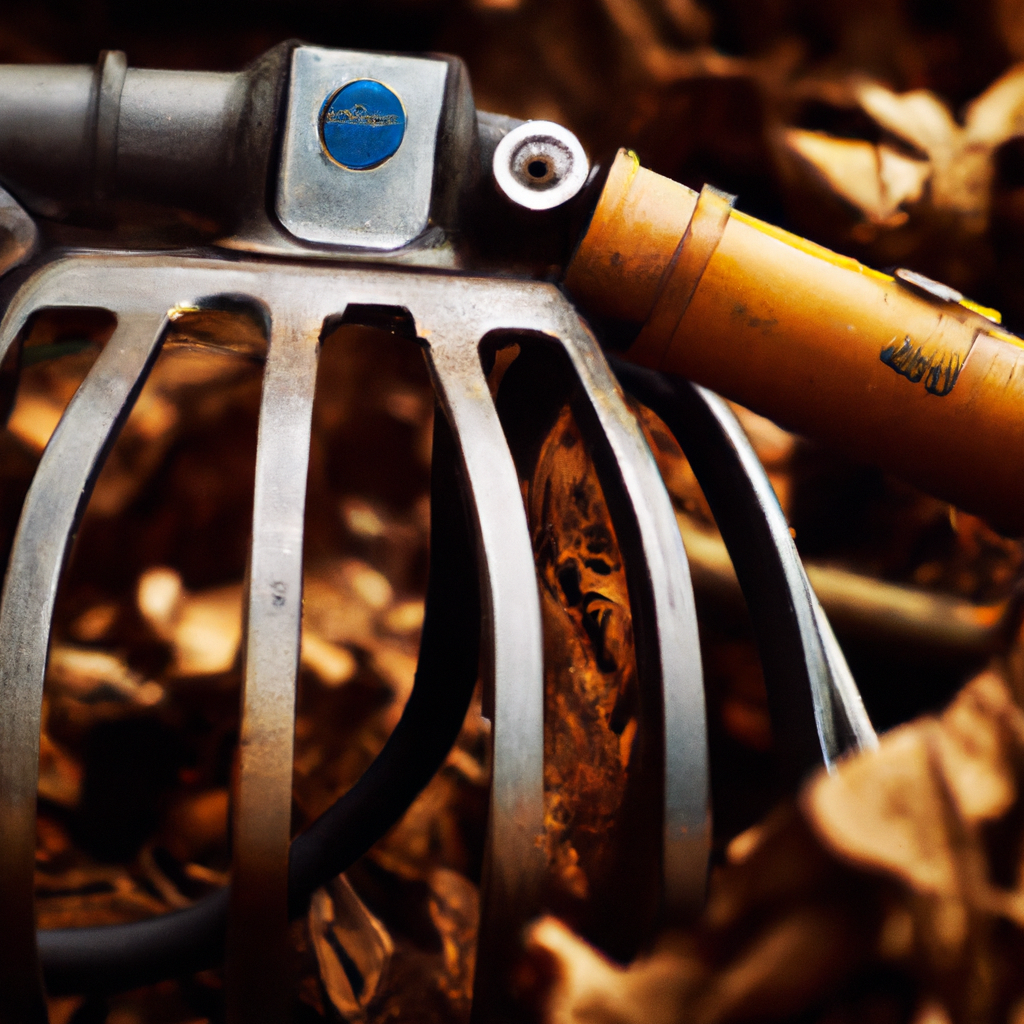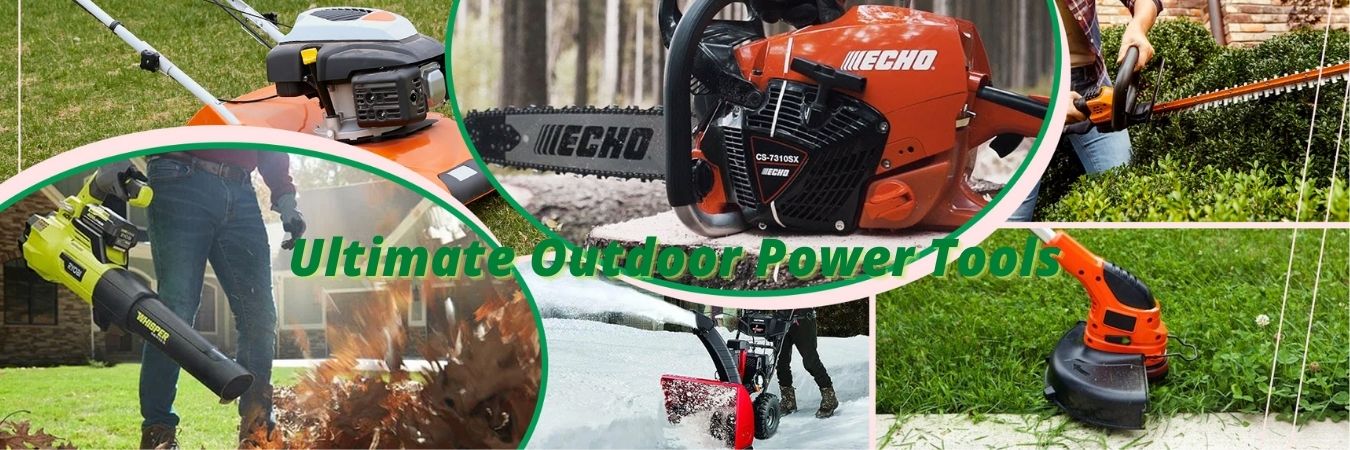We're an affiliate
We hope you love the products we recommend! Just so you know, we may collect a share of sales or other compensation from the links on this page. Thank you if you use our links, we really appreciate it!
If you’re a proud leaf blower owner, you know how this trusty tool can make your yard maintenance a breeze. However, like any machinery, leaf blowers can face their fair share of issues. From clogged air filters to fuel line problems, understanding common leaf blower problems will help you troubleshoot and keep your machine in top shape. In this article, we’ll explore some of the most frequent hiccups that leaf blowers encounter, providing you with valuable insights to tackle these challenges quickly and efficiently. So, grab a cup of coffee, sit back, and let’s get started on understanding what makes your leaf blower tick.

Failure to Start
Causes and Solutions for a Non-starting Leaf Blower
If you find yourself struggling to start your leaf blower, don’t worry, you’re not alone. Failure to start is a common issue faced by many leaf blower owners. There are several possible causes for this problem. Firstly, check if the ignition switch is turned on. Sometimes, a simple oversight can lead to a non-starting situation. Additionally, make sure the fuel tank is full and the fuel is fresh. Stale fuel can prevent the engine from igniting properly. If these basic checks don’t solve the problem, it’s possible that the spark plug might be faulty. Try cleaning or replacing the spark plug to ensure a strong spark. If all else fails, it’s best to consult a professional for further diagnosis and repair.
How to Prevent a No-start Situation
Prevention is always better than a cure, and the same applies to leaf blowers. To avoid the frustration of a non-starting leaf blower, there are a few simple steps you can take. Firstly, make sure to properly maintain your leaf blower by regularly cleaning the air filter and keeping it free from debris. This will ensure proper airflow and prevent any blockages that might hinder the starting process. Secondly, always use fresh fuel and ensure it is properly mixed with the recommended oil-to-gas ratio. Stale fuel or improper fuel mixture can lead to starting problems. Lastly, store your leaf blower in a dry and clean environment to prevent moisture from damaging crucial components. By following these preventive measures, you can minimize the chances of encountering a no-start situation.
Loss of Blowing Force
Causes Behind a Reduction in Blowing Power
If you’ve noticed a decrease in the blowing power of your leaf blower, there may be a few reasons behind this loss of force. One common cause is a clogged air filter. When the air filter becomes dirty or obstructed, it restricts the airflow, resulting in reduced blowing power. Another factor to consider is the condition of the blower’s tube and nozzle. If they are damaged or incorrectly attached, they can disrupt the airflow and diminish the blowing force. Additionally, a worn-out or improperly adjusted carburetor can cause a loss of power. Lastly, a malfunctioning engine can also contribute to decreased blowing force. It is important to address these issues promptly to restore your blower’s blowing power and efficiency.
Ways to Restore the Blower’s Force
To regain the lost blowing force of your leaf blower, there are a few steps you can take. Begin by checking and cleaning the air filter. If it is clogged, gently remove the dirt and debris or replace the filter if necessary. Next, inspect the tube and nozzle to ensure they are not damaged or improperly attached. If any issues are found, repair or replace these components as needed. Additionally, a carburetor that is in need of adjustment may benefit from professional tuning. Finally, if none of these actions restore the blowing force, it may be necessary to have the engine professionally inspected and repaired. By addressing these factors, you can restore the blower’s force and efficiently tackle your yard work.
Abnormal Vibrations
Causes of Excessive Vibrations in Leaf Blower
Experiencing abnormal vibrations while using a leaf blower can not only be uncomfortable but also indicate underlying problems. There are several potential causes for excessive vibrations. One possible reason is a loose or damaged impeller. The impeller is responsible for generating the air flow, and if it is out of balance or damaged, it can cause the blower to vibrate excessively. Another factor to consider is a worn-out or unbalanced fan blade. Over time, the fan blade may become worn or develop a crack, leading to vibrations during operation. Additionally, improper assembly or loose screws and bolts can contribute to abnormal vibrations. Lastly, worn or damaged engine mounts can also result in excessive vibrations. Identifying the cause is the first step towards mitigating these vibrations and ensuring a smooth operation.
Steps to Mitigate Unusual Vibrations
When faced with abnormal vibrations from your leaf blower, it is important to address the issue promptly to prevent further damage and discomfort. Start by checking the impeller for any signs of damage or imbalance. If necessary, repair or replace the impeller to restore the blower’s balance. Similarly, inspect the fan blade for any cracks or wear and replace it if needed. Ensure that all screws and bolts are properly tightened to avoid any loose connections that may contribute to the vibrations. Finally, if the vibrations persist, it is recommended to have the engine mounts inspected by a professional. By taking these steps, you can effectively mitigate the unusual vibrations and enjoy a smoother and more comfortable leaf blowing experience.
Overheating Problems
Reasons Why a Leaf Blower Overheats
Overheating is a common issue faced by leaf blower owners, particularly during prolonged use. There are several reasons why a leaf blower may overheat. One common cause is a clogged or dirty air filter. When the air filter becomes blocked, it restricts the airflow, causing the engine to work harder and generate excess heat. Another factor to consider is operating the blower at excessive throttle for extended periods. Continuous high throttle operation can lead to increased engine temperature and subsequent overheating. Additionally, a malfunctioning carburetor can result in a lean fuel mixture, causing the engine to run hotter than normal. Finally, if the blower’s cooling fins or cylinder head are dirty or covered in debris, it can impede heat dissipation and lead to overheating. Understanding these potential causes can help prevent overheating issues and keep your leaf blower running smoothly.
Preventive Measures to Avoid an Overheating Situation
To prevent overheating problems with your leaf blower, there are a few preventive measures you can take. First and foremost, ensure the air filter is clean and free from debris. Regularly inspect and clean or replace the air filter as necessary to maintain proper airflow. Secondly, avoid operating the blower at maximum throttle for prolonged periods. Give the blower occasional breaks to prevent excessive heat buildup. Additionally, it is essential to have the carburetor maintained and adjusted properly to ensure a correct fuel mixture. Lastly, keep the blower’s cooling fins and cylinder head clean and free from debris by regularly removing any accumulated dirt or debris. By implementing these preventive measures, you can minimize the risk of overheating and prolong the lifespan of your leaf blower.

Fuel-Related Issues
Common Fuel Issues Affecting the Blower’s Performance
Fuel-related issues can significantly impact the performance of your leaf blower. One common problem is the use of stale fuel. Over time, fuel can break down and become stale, which can cause the engine to run poorly or even result in a failure to start. Another fuel-related issue is using the incorrect fuel-to-oil ratio. A proper mixture is crucial for optimal engine performance. Using too much or too little oil can lead to engine damage or poor running condition. Additionally, the presence of water or dirt in the fuel can cause blockage and clogging in the fuel system, resulting in decreased performance. It is important to address these fuel-related issues promptly to ensure reliable operation of your leaf blower.
How to Resolve Fuel Problems
Resolving fuel-related problems requires proper maintenance and attention to detail. Start by using fresh fuel and avoiding the use of stale gasoline. If the fuel has been sitting for an extended period, it is best to replace it with fresh fuel. Ensure that you mix the fuel with the appropriate oil-to-gas ratio as recommended by the manufacturer. Using a fuel stabilizer can also help prevent fuel degradation over time. To address issues caused by water or dirt in the fuel, consider using a fuel filter or installing a fuel sediment bowl to remove impurities before they reach the engine. Regularly inspect and clean the fuel system components, such as the fuel lines and carburetor, to prevent blockages. By taking these proactive steps, you can resolve fuel problems and maintain optimal performance from your leaf blower.
Engine Stalling
Causes and Solutions for Engine Stallings
Experiencing engine stalling with your leaf blower can be frustrating and disrupt your work. There are several possible causes for engine stalls. One common reason is a dirty or clogged carburetor. The carburetor is responsible for mixing fuel and air for combustion, and when it becomes clogged, it can disrupt this process, leading to engine stalls. Another factor to consider is a faulty ignition system. If the spark plug is worn out or the ignition coil is malfunctioning, it can result in inconsistent or weak sparks, causing the engine to stall. Additionally, a blocked fuel line or a malfunctioning fuel pump can restrict fuel flow, leading to engine stalling. To resolve engine stalling issues, it is necessary to identify the underlying cause and take appropriate actions.
Preventive Measures Against Engine Stalls
Preventing engine stalls requires regular maintenance and attentiveness to potential issues. Begin by keeping the carburetor clean and free from debris. Regularly inspect and clean or replace the carburetor to ensure proper fuel and air mixture. Additionally, regularly check the spark plug and ignition system for any signs of wear or damage. Replace the spark plug at regular intervals and ensure the ignition system is in good working order. It is also essential to keep the fuel system clean by checking for any obstructions or blockages in the fuel lines and ensuring the fuel pump is functioning properly. By implementing these preventive measures, you can minimize the chances of experiencing engine stalling and enjoy uninterrupted use of your leaf blower.

Excessive Noise
Sources of Unusual sounds from a Leaf Blower
Excessive noise from a leaf blower can not only be bothersome but also indicate potential underlying issues. There are several sources of unusual sounds that may occur during the operation of a leaf blower. One common cause is a loose or damaged exhaust system. A loose muffler or exhaust pipe can create rattling or banging sounds. Another factor to consider is the blower’s fan blades. If they are damaged or become unbalanced, it can result in increased noise levels. Additionally, worn-out engine components, such as bearings or pistons, can contribute to excessive noise. It is important to identify the source of the unusual sounds to address the problem and reduce noise levels.
Ways to Reduce the Noise Levels
Reducing the noise levels of your leaf blower can enhance your outdoor experience and minimize disturbance to others. Begin by inspecting the exhaust system and ensuring it is properly secured. Tighten any loose components or replace damaged parts to eliminate rattling or banging noises. If the fan blades are the source of the noise, check for damage or imbalance. Replace any damaged blades and ensure they are properly balanced. Regular maintenance of the engine components, such as lubricating bearings and replacing worn-out parts, can help reduce excessive noise levels caused by engine wear. Additionally, consider wearing hearing protection while operating the leaf blower to protect your ears from the noise. By taking these steps, you can effectively reduce the noise levels and enjoy a more peaceful leaf blowing experience.
Air Filter Problems
Complications Due to a Clogged Air Filter
A clogged air filter can cause several complications for your leaf blower. The air filter plays a vital role in preventing dust, dirt, and debris from reaching the engine. When it becomes clogged, it restricts the airflow, leading to poor engine performance, decreased fuel efficiency, and potential damage to engine components. A clogged air filter can cause the engine to run rich, resulting in excessive fuel consumption, increased emissions, and reduced power output. Additionally, it can lead to the build-up of carbon deposits in the combustion chamber, further affecting engine performance. Addressing air filter problems promptly is essential to maintain optimal performance and prolong the lifespan of your leaf blower.
Maintenance Tips for an Efficient Air Filter
Proper maintenance of the air filter is necessary to ensure efficient and reliable performance from your leaf blower. Start by inspecting the air filter regularly and clean or replace it as needed. Cleaning the air filter can be done by gently tapping it to remove loose debris or using compressed air to blow away any accumulated dirt. If the filter is excessively dirty or damaged, it is best to replace it with a new one. Additionally, ensure that the air filter housing is clean and free from debris before installing a new or cleaned filter. Regularly maintaining the air filter will improve engine performance, fuel efficiency, and overall operation of your leaf blower.

Carburetor Issues
Problems Associated with a Malfunctioning Carburetor
A malfunctioning carburetor can lead to several problems with your leaf blower’s performance. The carburetor is responsible for mixing the fuel and air in the correct proportions for combustion. When it malfunctions, it can cause a variety of issues. One common problem is a lean fuel mixture, where there is insufficient fuel for combustion. This can result in engine misfires, poor acceleration, and decreased power output. On the other hand, a rich fuel mixture, with an excess of fuel, can lead to fouled spark plugs, black smoke emissions, and decreased fuel efficiency. Additionally, a malfunctioning carburetor can cause erratic idle speeds, difficulty in starting, and general poor running condition. Resolving these carburetor issues is crucial to restore optimal performance to your leaf blower.
Fixing the Carburetor for Enhanced Performance
Fixing carburetor issues will greatly improve the overall performance of your leaf blower. Start by cleaning the carburetor thoroughly, removing any dirt or debris that may be obstructing its function. Carefully inspect the various components, such as the float, needle valve, and jets, and ensure they are clean and free from any blockages. If cleaning does not resolve the issue, a carburetor rebuild or replacement may be necessary. Be sure to follow the manufacturer’s instructions and specifications when replacing any carburetor components. Alternatively, it may be best to seek assistance from a professional to ensure the proper repair and adjustment of the carburetor. By fixing the carburetor, you can enjoy enhanced performance, improved fuel efficiency, and smoother operation of your leaf blower.
Spark Plug Defects
Identifying Common Spark Plug Related Problems
Spark plug defects can cause a range of problems in your leaf blower’s performance. The spark plug plays a crucial role in the ignition process, producing the spark necessary for combustion. When it becomes worn or damaged, it can lead to various issues. One common problem is difficulty in starting the engine. A faulty spark plug may not provide a strong enough spark to ignite the fuel-air mixture, resulting in engine misfires or failure to start. Additionally, worn-out spark plugs can cause poor acceleration, decreased power output, and reduced fuel efficiency. Another indicator of spark plug defects is black, oily, or fouled spark plugs, indicating potential engine problems. Identifying these common spark plug issues is essential to maintain optimal performance and reliability of your leaf blower.
Troubleshooting and Preventive Advice for Spark Plug Issues
Troubleshooting spark plug issues can help to address performance problems and prolong the lifespan of your leaf blower. Start by inspecting the spark plug regularly and cleaning or replacing it as needed. Cleaning can be done by using a wire brush or a spark plug cleaner to remove any carbon deposits. If the spark plug is excessively worn, damaged, or fouled, it is best to replace it with a new one. Ensure that the spark plug is properly gapped according to the manufacturer’s specifications before installation. Additionally, regularly check the ignition system for any loose connections or faulty wires that may affect spark production. Finally, it is important to use the appropriate spark plug recommended by the manufacturer for your specific leaf blower model. By taking these troubleshooting and preventive measures, you can effectively address spark plug issues and maintain optimal performance from your leaf blower.
In conclusion, leaf blowers can encounter various problems that affect their performance and reliability. From failure to start to spark plug defects, it’s essential to understand the potential causes and solutions for these issues. By implementing preventive measures, addressing maintenance needs, and promptly troubleshooting any problems, you can ensure a smoothly functioning leaf blower that is ready to tackle your outdoor tasks effectively. Remember to refer to the manufacturer’s guidelines and, when in doubt, seek professional assistance for more complex repairs.

